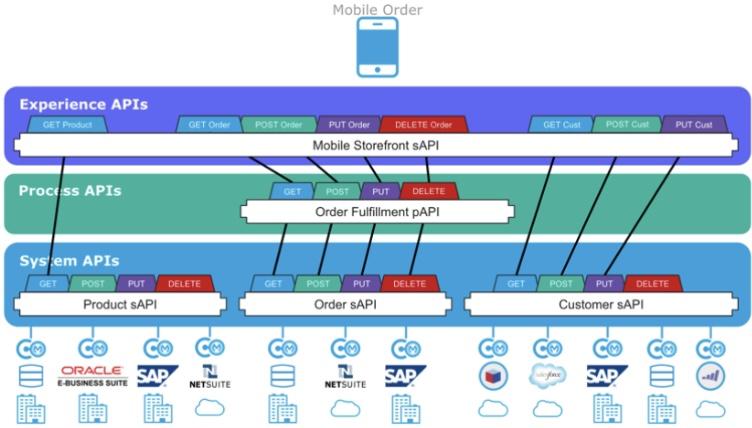MuleSoft is a well-known platform that may be used to construct and manage APIs. It is also a highly effective integration platform that gives developers the ability to integrate apps & systems in a seamless manner. The API administration capabilities of Mulesoft are among the product’s most notable characteristics. An Application Programming Interface, sometimes known as an API, is a collection of protocols & tools that are used in the process of developing software applications.
Introduction
Developers have the ability to construct, manage, and connect APIs with the help of MuleSoft, which is a prominent integration platform. Application Programming Interfaces, also known simply as APIs, are a collection of protocols and standards that specify the manner in which various software components should communicate with one another. You can create and manage many different kinds of APIs in MuleSoft. These APIs come in a variety of different flavors. Every application programming interface (APIs) has its pros and its downsides, therefore it’s important to choose the right one for your needs. The purpose of this article is to introduce the reader to the MuleSoft APIs that can be used for various purposes.

What is API
Application Programming Interface is what we mean when we say API. An API is a set of protocols, procedures, tools, & standards that allows one software program to interact with another. One useful way to conceptualise an API is as a set of components that may be used as building blocks in the creation of new applications. To better serve its users, the social media platform may provide developers with access to data about those users, tools for making original content, and other means to interact with the platform itself through the application programming interface (API). Similarly, a payment method may provide an API for managing customer information, processing refunds, & handling payments. To gain complete knowledge about API Management and Testing beneficial features in API Testing Training helps to a great extent.
What is Mulesoft
For organizations, the MuleSoft Anypoint Platform’s assortment of helpful services and tools greatly reduces the complexity of building, releasing, and maintaining interfaces. The following are some of them:
- Anypoint Studio:
Easy-to-learn and very effective graphical programming environment made for the sole purpose of creating & testing Mule integrations.
- Crafting Facility:
An online graphical RAML editor for creating and documenting APIs & integrations.
- CloudHub:
A cloud-hosted iPaaS that includes full administration for deploying & managing integrations.
- Anypoint Management Center
A centralized system for managing & keeping track of integrations across a company, from deployment to runtime monitoring & analytics.
- Anywhere Trade:
A marketplace where APIs, connectors, templates, and examples may be found, shared, and reused.
Whether deployed on-premises, in the cloud, or a combination of the two, the MuleSoft platform is designed to help businesses overcome the challenges of connecting disparate systems and services. With MuleSoft, organisations can develop seamless interfaces, which in turn reduces their time – to – market, increases their agility, & improves the effectiveness of their customer interactions.
If you need to connect programs, databases, and gadgets, go no further than MuleSoft and their cutting-edge integration platform. Its flagship product, the Anypoint Platform, is what the company is most known for.
Message-based middleware, Application programming interfaces (APIs), as well as other integration techniques are only some of the approaches made possible by this platform, allowing organizations to quickly connect their numerous infrastructure and applications.
What are the Types of API in Mulesoft
MuleSoft offers support for a wide variety of application programming interfaces (APIs), each of which comes with its own individual set of benefits and drawbacks. The list consists of the most prevalent types of application programming interfaces (APIs) found in MuleSoft:
- GraphQL APIs:
GraphQL is an app programming interface (API) query language that increases the scope to precisely convey the information that they necessitate from an API. It does this by using graphs instead of traditional SQL queries. Application programming interfaces (APIs) written in GraphQL allow clients to request only the data that is pertinent to them. This adds to the APIs’ great deal of flexibility & efficiency. Moreover, developers have the opportunity to define their custom types & fields, making the system extremely adaptable to the specific needs of their projects.
- SOAP APIs:
The acronym “SOAP” refers to a Simple Object Access Protocol, that is a protocol that allows programs to interact with each other by sharing structured data. Its protocol is referred to by its full name, the Simple Object Access Protocol. SOAP APIs are typically more difficult to use than REST APIs due to the fact that they require a larger amount of configuration & are sometimes slower to respond to requests. On the other side, they are widely utilized in commercial applications, which are traditionally the ones that are normally the most focused with security and reliability.
- REST APIs:
The acronym REST refers to a particular form of system design that is frequently utilized in web-based application development. “Representational State Transfer” is another acronym that can be shortened to “REST.” In terms of their underlying architecture, REST APIs are designed to be as uncomplicated, lightweight, and user-friendly as possible. They will conduct operations on the data most of the time by executing HTTP requests, and that they will deliver the data format like JSON or XML.
- RAML APIs:
RESTful API Modeling Language is the name of the language that is used to describe REST APIs. RAML is the acronym for this language. Because RAML APIs are supposed to be self-documenting, it should not be difficult for programmers to figure out how to make use of them and what information they give back. They also have the capability of generating code as well as other resources, which can help to speed up the development process.
Each form of API has a unique set of advantages and disadvantages, and selecting the proper type for your project depends on the requirements that it has in particular. MuleSoft has you covered regardless of whether you require a straightforward and lightweight REST API or a more complicated and secure SOAP API.
Importance of API in Mulesoft
APIs are an essential component of MuleSoft’s integration platform because they offer a standardized and adaptable channel through which programs, data, and devices may exchange information with one another. APIs are extremely significant in MuleSoft for a variety of reasons, including the following:
- Standardization:
APIs, or application programming interfaces, offer a standardized method for many types of systems to communicate with one another, regardless of the underlying technologies or protocols used by each system. This helps to minimize complexity and promote interoperability, making it easier for businesses to link the many systems and services that they utilize.
- Reusability:
APIs are designed to be repurposed across many projects and applications, which helps developers save both time and effort. Anypoint Exchange, which is provided by MuleSoft, is a market place for discovering and sharing APIs. It enables developers to make use of pre-built APIs and connectors, which speeds up the development process.
- Flexibility:
The application programming interface (API) provides a high level of flexibility, which enables developers to tailor the behavior and functionality of APIs to the particular requirements of their projects. The Design Center and Anypoint Studio are just two of the API design and testing tools that are included as part of MuleSoft’s Anypoint Platform. These tools make it simple for developers to create new APIs and improve existing ones through iteration.
- Scalability:
Because application programming interfaces (APIs) can be scaled to manage significant amounts of traffic and data, they are ideally suited for integrating large-scale computer systems and services.
- Security:
In order to guarantee the integrity of application programming interfaces (APIs), it is possible to put in place a variety of safeguards, including authentication, encryption, as well as rate limiting, among others (APIs). Anypoint Platform from MuleSoft contains a number of different security capabilities, such as OAuth 2.0, TLS/SSL, and IP whitelisting, to assist in maintaining the integrity and confidentiality of data that is transferred through APIs.
APIs are an essential part of MuleSoft’s integration platform because they offer a standardized, flexible, and secure method for applications, data, and devices to communicate with one another. APIs are also an integral part of MuleSoft’s integration platform. APIs allow organizations to improve business processes, increase agility, and enhance customer experiences by overcoming the challenges of integrating disparate systems and services. This enables the organizations to better serve their customers.
Conclusion:
MuleSoft offers a wide variety of API types that may be utilized by developers in the process of building and managing integrations. Each form of application programming interface (API), including REST APIs, SOAP APIs, RAML APIs, and GraphQL APIs, possesses a unique set of advantages and disadvantages; selecting the appropriate API for a given project is contingent on those requirements. Anypoint Platform from MuleSoft enables developers to effortlessly build, deploy, and manage integrations across a broad variety of systems and services, regardless of whether those systems and services are hosted on-premises, in the cloud, or a hybrid of the two. Developers have an easier time creating integrations that improve corporate processes, increase agility, and enhance customer experiences thanks to the platform’s tools and services, such as Design Center, Anypoint Studio, CloudHub, Anypoint Exchange, and Anypoint Management Center.
Author Bio:
 I am Korra Shailaja, Working as a Digital Marketing professional & Content writer in MindMajix Online Training. I Have good experience in handling technical content writing and aspire to learn new things to grow professionally. I am an expert in delivering content on the market demanding technologies like Mulesoft Training, Dell Boomi Tutorial, Elasticsearch Course, Fortinet Course, PostgreSQL Training, Splunk, Success Factor, Denodo, etc.
I am Korra Shailaja, Working as a Digital Marketing professional & Content writer in MindMajix Online Training. I Have good experience in handling technical content writing and aspire to learn new things to grow professionally. I am an expert in delivering content on the market demanding technologies like Mulesoft Training, Dell Boomi Tutorial, Elasticsearch Course, Fortinet Course, PostgreSQL Training, Splunk, Success Factor, Denodo, etc.

